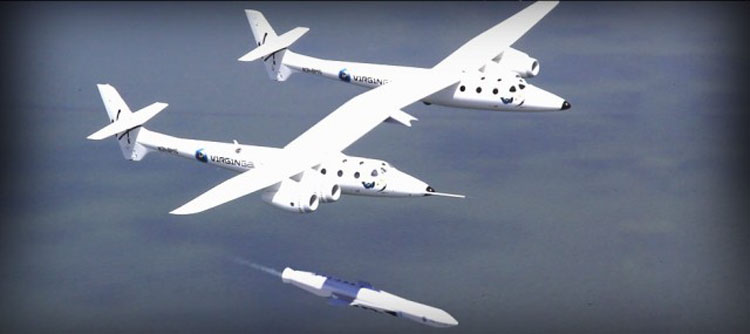Branson added that Virgin Galactic has already received deposits from four private companies intent on using the LauncherOne for “several dozen launches.” One of the companies, Skybox Imaging, is planning to deploy a constellation of high resolution imaging satellites. Another of the new customers is the recently announced Planetary Resources, the asteroid mining company.
The small satellite industry is growing as engineers are able to cram more and more capability into smaller packages. Virgin Galactic’s LauncherOne is competing with existing air launch provider Orbital Sciences, as well as small, ground-based rocket launch services. But air launch ideas aren’t limited to the small satellite industry. Scaled Composites – the company that designed and is flight testing WhiteKnightTwo and SpaceShipTwo – is also working with Microsoft co-founder Paul Allen to develop the largest airplane in the world, which will air launch a SpaceX Falcon 9-based rocket capable of carrying heavier payloads to orbit.
Both Virgin Galactic’s LauncherOne and Orbital Sciences’ Pegasus rocket feature small wings to aid stability during the drop from the carrier aircraft and turn the rockets make to their upward trajectory to orbit. By using a carrier aircraft, rockets can be launched from 50,000 feet, independent of weather conditions on the ground. And unlike ground-based rockets that are limited to a handful of launch sites around the world, air launched rockets can be carried almost anywhere to optimize the entry to the desired orbit.
WhiteKnightTwo has recently been busy with resumption of flight testing for SpaceShipTwo. The flight test team at Scaled Composites made eight flights with WK2 last month, the last two included releasing SS2 for glide flights.
Images: Virgin Galactic



6061 Views
